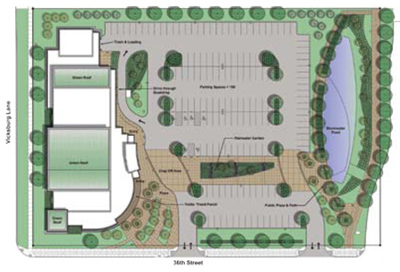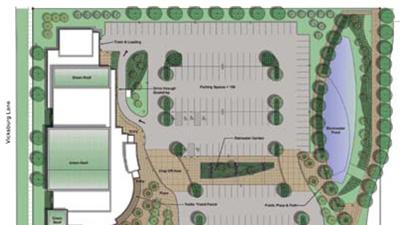Designing a green future in Hennepin County
Hennepin County, Minn., has been a leader in the development of sustainable building practices to assist planners and architects in the design and construction of facilities in a manner that minimizes adverse environmental impacts throughout the building life cycle, while maximizing functionality and economy.
In 1997, Hennepin County staff, in conjunction with the University of Minnesota College of Architecture and Landscape Architecture, launched a program to ensure that the county’s $30 million annual facilities budget was spent on sustainable projects. Working with an interdisciplinary team that included selected local consultants, Hennepin County set out to develop a sustainable design guide for its medical, library, office and institutional buildings.
The first phase of the project, completed in December 1998, was the development of the Hennepin County Sustainable Design Guide, which later morphed into the Minnesota Sustainable Design Guide and eventually was incorporated into the State of Minnesota Sustainable Building Guidelines, known as B3 (Buildings, Benchmarks and Beyond). The guide was one of the first of its kind and provided a regionalized tool to learn about sustainability, determine performance measures to guide design decisions, and integrate sustainable design into county facilities.
Two new libraries — Maple Grove and Plymouth — are under construction, and are a significant step forward in Hennepin County’s efforts to create sustainable and energy-efficient buildings. The buildings’ mechanical and electrical systems have been designed to exceed Minnesota Energy Code by 40 percent. Both libraries have raised floors using under-floor air distribution to provide for increased indoor air quality and comfort levels for occupants. The under-floor duct provides for flexibility in data and electrical distribution.

The Plymouth Library (shown, above, in an architectural rendering) relies on a geothermal system that uses the 55-degree temperature of the earth to augment both heating and cooling of the facility; the system is expected to save $27,000 a year. The Maple Grove Library uses a hydrothermal system looped into an adjacent pond; the system is expected to save $25,000 a year. Energy-management systems provide for 24/7 monitoring of building systems.
The libraries’ other sustainable features and practices include:
- High-efficiency building envelopes.
- Energy-efficient lighting systems that use occupancy sensors and automatic controls, and a design that maximizes daylighting.
- Partial green roofs.
- Permeable pavers.
- Local building products and landscaping materials.
The existing Plymouth library was deconstructed and recycled back into the product stream.
Buildings have a major impact on many of the environmental problems facing our society. According to the World Watch Institute, “As much as a tenth of the global economy is dedicated to buildings: to construction, operating and equipping our built environment.” Hennepin County is committed to addressing these and related environmental concerns by providing a design process that can impact decision-making throughout the life of a building — during the design, occupancy and even next-use phases.
For more information on Hennepin County’s green initiatives, visit http://www.hennepin.us/greengovernment.
About the author
Nathan Reinbold, recycling/environmentally preferable purchasing specialist for Hennepin County Environmental Services, is a Green Knowledge Community leader. NIGP’s Green Knowledge Community brings together subject-matter experts and practitioners to develop, disseminate and promote information and resources for and about policy development, environmentally preferable products, and social and economic responsibility in public procurement.




















